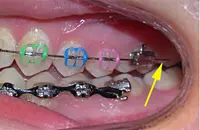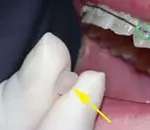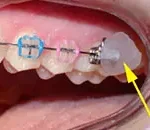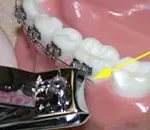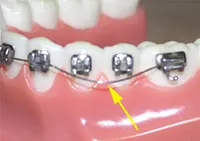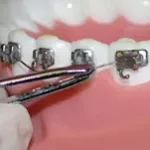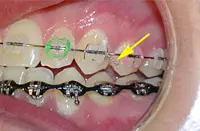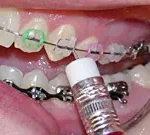If you think you may have an orthodontic emergency in Allen or McKinney, TX, the first step is to determine the severity of the problem: Is it an urgent situation that requires immediate attention, or a minor problem that you can take care of yourself, temporarily, until you can come into the office?
There are only a few true orthodontic (or dental) emergencies. They include:
- Trauma or injury to the teeth, face or mouth
- Infection or swelling of the gums, mouth or face
- Severe, unmanageable discomfort or pain in these areas
In any of these situations, you should seek help as soon as possible — go to an emergency room, if that’s your best option.
Generally, however, the place to start is at the dental office. If, for example, you have a fractured tooth, that immediate problem requires diagnosis and treatment. Afterward, your orthodontic treatment plan can be adjusted as needed. Likewise, severe pain or swelling could be a sign of infection or disease, which also needs immediate treatment.
Most orthodontic “emergencies” can be handled easily at home. To help you accurately describe an emergency to our office, use the following picture, which names each part of a typical set of braces.
A. Archwire: The archwire is tied to all of the brackets (braces) and applies force to move teeth.
B. Brackets: Brackets are bonded on the teeth and hold the archwire in place.
C. Metal band: The band is the cemented ring of metal that wraps around the tooth.
D. Ligature – Elastic “O” rings or elastics: The archwire is held to each bracket with a ligature which is usually a tiny elastic (this comes in a range of colors).
E. Ligature – Metal tie: The archwire can also be held to the bracket with a metal ligature tie.
F. Elastics/rubber bands: Elastics/rubber bands help move teeth toward their final position.
G. Power chain: Elastic chains are also used to hold the archwire in place.
Our team is on call seven days a week from 7 AM to 9 PM to assist you.
Supplies to handle most orthodontic problems
With these supplies on hand, you will be prepared to handle the most common problems with braces.
Non-medicated orthodontic relief wax
Dental floss
Sterile tweezers
Small, sharp clippers suitable for cutting wire (such as a fingernail clipper)
Q-tips
Salt
Interproximal brush
Non-prescription pain reliever (acetaminophen, ibuprofen, etc.)
Oral topical anesthetic (such as Orabase or Ora-Gel)

Common orthodontic issues
Fortunately, the vast majority of orthodontic problems are minor — but they may still cause discomfort or irritation. In general, it’s best to try and soothe the immediate cause of the discomfort, and then call for an appointment. Here are a few of the more common orthodontic problems, along with some tips on what you can do to relieve them at home:


